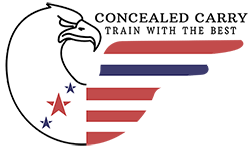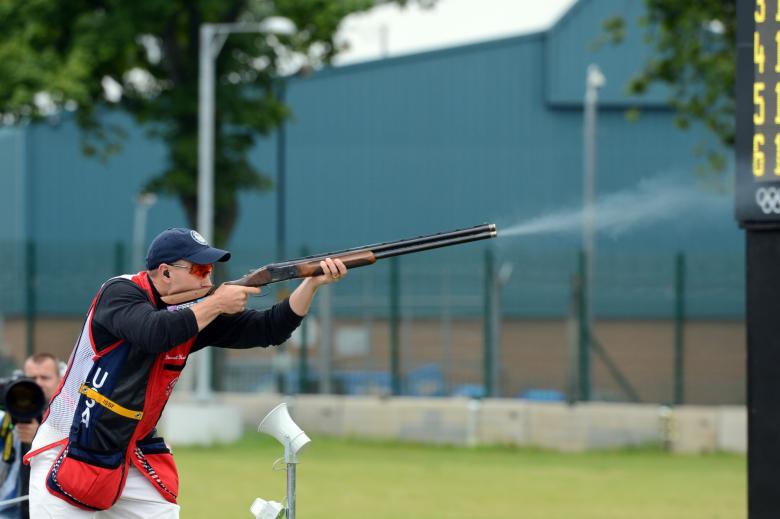Regarding competitive shooting, success is built on a foundation of skill, precision, and practice. Whether you’re a seasoned shooter or a beginner, training at a Shooter Gun Range can significantly enhance your abilities and help you excel in competitions. However, knowing how to get started in competitive shooting can be a daunting task. This guide will walk you through the process of diving into Shooter Gun Range competition training, providing the insights you need to train effectively, build confidence, and improve your performance.
Why Shooter Gun Range Competition Training Matters
Competition shooting is not just about hitting the target. It’s about mastering the art of quick, accurate shots under pressure. At a Shooter Gun Range, you can work on the core aspects of shooting, aiming, handling, and reaction time. Each type of competition whether it’s USPSA, IDPA, or 3-gun requires specialized training, but all competitions share one key aspect: the need for consistent practice.
Training at a Shooter Gun Range builds muscle memory and sharpens mental focus, both of which are essential to performing well in competitions. It’s about refining your skills to compete at the highest level, whether you’re shooting for personal satisfaction or aiming for a podium finish.
Step 1: Understanding Your Competition Goals
The first step in getting started is to understand what type of competitive shooting you’re interested in. Different competitions have distinct formats, challenges, and requirements. Here are a few of the most popular types of shooting sports that you may encounter at a Shooter Gun Range:
- USPSA (United States Practical Shooting Association): A fast-paced action shooting sport focusing on speed and accuracy. It combines practical gun-handling skills with dynamic target engagement.
- IDPA (International Defensive Pistol Association): This competition simulates real-world self-defense scenarios, where shooters engage targets with practical shooting techniques in various simulated settings.
- 3-Gun: A competition that uses three different firearms—rifle, pistol, and shotgun—across various stages. This requires versatility and a strong understanding of different firearms.
Each sport requires different types of preparation and skills, so it’s crucial to determine your preferred competition type before diving into training at a Shooter Gun Range.
Step 2: Choosing the Right Equipment
At a Shooter Gun Range, having the right gear is crucial. While many ranges offer rental equipment, serious competitors should invest in their own firearms and gear. Here are the basic items you’ll need for competition shooting:
- Firearm: The type of firearm you’ll use depends on the competition. For example, you’ll need a semi-automatic pistol for USPSA, a defensive pistol for IDPA, or a combination of rifle, pistol, and shotgun for 3-gun competitions.
- Ammunition: It’s essential to use the correct ammunition for your competition type and firearm. Check the specific rules of your competition, as some events have restrictions on ammunition.
- Holster: A competition-grade holster allows you to quickly draw your firearm, which is vital for timed events.
- Magazines: Ensure you have sufficient magazines for reloading during competitions. Having extra magazines available can make a significant difference in performance.
- Protective Gear: Always wear eye and ear protection at the Shooter Gun Range to ensure safety during training and competitions. Some ranges also require gloves or other gear.
- Belt and Pouches: A sturdy shooting belt with pouches for magazines and tools can help you stay organized and keep your equipment readily accessible.
Understanding Concealed Carry Laws
Before you start carrying concealed, it’s important to understand the laws surrounding concealed carry in your state. For Virginia residents or those planning to shoot in Virginia, you’ll want to familiarize yourself with the Virginia Concealed Carry Reciprocity laws. Knowing which states recognize Virginia’s concealed carry permits is crucial to ensure you are legally compliant when traveling or competing.
Step 3: Training Techniques for Competition Shooting
Effective competition training is essential for excelling in the sport. At a Shooter Gun Range, you can practice a variety of drills that target different aspects of shooting. Here are some key areas to focus on:
1. Fundamentals of Shooting
Before diving into complex drills, ensure you have a solid grasp of the basic shooting fundamentals:
- Grip: A firm, proper grip on your firearm is essential for accuracy and recoil control.
- Sight Alignment: Align the front and rear sights with the target to ensure a clean, precise shot.
- Trigger Control: Practice smooth, controlled trigger pulls to avoid jerking the gun, which can affect your accuracy.
- Stance: Your stance plays a role in controlling the firearm and staying steady while shooting. Practice different stances, such as isosceles or Weaver, based on the competition style.
2. Speed and Accuracy
A key factor in competition shooting is the ability to shoot quickly without sacrificing accuracy. Time matters in most competitions, but so does hitting the target precisely. To improve both speed and accuracy, practice engaging multiple targets in quick succession and shooting under time constraints. At a Shooter Gun Range, you can set up various drills that focus on reaction time, target transitions, and engaging moving targets.
3. Movement and Reloading
In many competitions, shooters must move between positions while maintaining accuracy. Practice moving from one position to another while keeping your firearm ready and your target in sight. Also, incorporate drills that involve reloading quickly under pressure. This is particularly important in events like USPSA or 3-gun competitions, where you’ll need to reload efficiently to stay competitive.
4. Mental Preparation and Focus
Competition shooting requires not only physical skill but also mental discipline. Stay calm under pressure, and practice focusing on your target and your technique while blocking out distractions. Visualization techniques, where you mentally rehearse your shooting performance, can also be a valuable tool for improving your mindset.
Step 4: Regular Practice and Consistency
The most important factor in becoming a successful competition shooter is consistency. Regularly training at a Shooter Gun Range helps you build muscle memory, improve reaction times, and perfect your technique. Consider setting a schedule to practice a few times a week, focusing on different aspects of shooting each session.
Dry-Fire Practice
In addition to live-fire training, dry-fire practice is an excellent way to improve your skills. This involves practicing with an unloaded firearm, focusing on trigger control, sight alignment, and drawing from the holster. Dry-fire training allows you to practice without using ammunition, saving time and money while honing your skills.
Simulate Competition Conditions
To be truly prepared for competitions, simulate the environment you’ll face on the range. Train under timed conditions, replicate the type of shooting challenges you’ll encounter, and practice handling the pressure of competing. Many Shooter Gun Range facilities offer courses or group training sessions that replicate competition scenarios, providing an ideal setting for your practice.
Step 5: Participate in Competitions
After putting in the time and effort to practice, it’s time to take your skills to the next level by entering a competition. This is a key step in the learning process. Even if you don’t win initially, competing will give you valuable experience and help identify areas for improvement.
Look for local or regional competitions, and don’t be afraid to start small. Many events welcome new shooters, and you’ll find that the shooting community is supportive and eager to help beginners. The more you compete, the more you’ll learn about your strengths and weaknesses as a shooter, and the better you’ll become over time.
Frequently Asked Questions (FAQ)
1. How often should I train at a Shooter Gun Range for competition shooting?
Training frequency depends on your goals and available time. For serious competitors, training 2-3 times a week is ideal. However, consistent practice, even if it’s just once a week, can still yield significant improvement.
2. What’s the best way to improve my shooting speed?
To improve your shooting speed, focus on practicing drills that combine speed with accuracy, such as drawing from the holster and engaging multiple targets quickly. Use a timer to track your progress and challenge yourself to improve each time.
3. Do I need to buy a lot of expensive gear for competition shooting?
While some equipment can be costly, you don’t need the most expensive gear to get started. Focus on acquiring reliable, competition-grade gear that meets the requirements of your chosen competition type. Over time, you can upgrade your equipment as your skills improve.
4. What should I do if I’m feeling nervous or under pressure during a competition?
It’s normal to feel nervous, especially when you’re new to competitive shooting. The key is to stay focused on your technique and breathing. Take a moment to reset if you feel overwhelmed, and remember that it’s all about improving with every competition.
5. Can I train for competition shooting at home?
Yes, dry-fire practice and fitness training can be done at home. While live-fire practice at a Shooter Gun Range is essential for honing real-world skills, dry-fire exercises can help you work on fundamentals like trigger control and sight alignment.
Final Thoughts
Training at a Shooter Gun Range for competition shooting is an exciting and rewarding journey. By focusing on technique, consistency, and mental preparation, you can develop the skills needed to excel in your chosen shooting sport. Remember, competition shooting is as much about enjoying the process of improvement as it is about the thrill of competition. So, start your training today, set realistic goals, and prepare to see your shooting abilities soar. With dedication and the right mindset, you’ll be well on your way to becoming a competitive shooter who thrives at the range.





